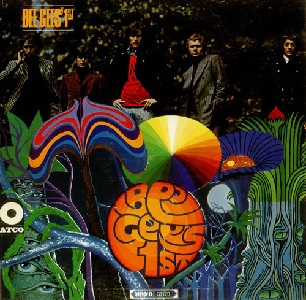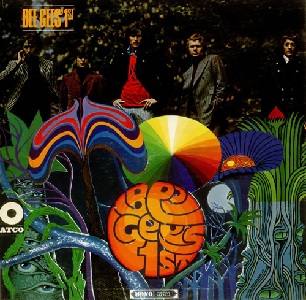Bee Gees 1st was released fifty years ago yesterday. Contrary to its own title, it was not the Bee Gees’ first long-play or full-length release. It was titled and marketed as such to mark the then-quintet’s (the three brothers and two other unrelated musicians) first foray into the international music market, following their considerable success in the brothers’ adopted homeland Australia with a string of singles and a couple of long-plays.

As an album released in both the US and the UK in 1967, it was facing stiff creative competition from many great albums also released in the same year (just look at Robert Christgau’s list of influential 1967 albums (https://www.robertchristgau.com/xg/rs/albums1967-07.php); How dare he missed July and not included 1st?), including that little album called Sgt. Pepper and the Lonely Hearts Club Band just released in the preceding month of June. However, the singles persevered and the Bee Gees went on to become pop sensations themselves as the hits kept coming.
1st also marked the Bee Gees’ first taste at international pop stardom, with the singles taken off the album charting highly in many places, including the now-classic “Holiday”, “New York Mining Disaster 1941”, “To Love Somebody”, and “I Can’t See Nobody”. The longevity of these singles and the brothers’ subsequent chart success have somewhat overshadowed the excellence of the rest of the album, which showcases that the brothers were an energetically psychedelic songwriting powerhouse.
1st is certainly not a very unified and conceptual effort compared to the likes of Sgt. Pepper and the Moody Blues’s Days of Future Passed, but it is a journey through the many creative possibilities that the brothers explored throughout the album. The album opens with “Turn of the Century”, a note on the fascination of the late Victorian era accompanied with a clever orchestration and studio production that imparts an old record sound; Robin Gibb’s trembling voice only strengthens this image. The bleak and haunting yet beautiful melody of “Holiday” soon follows. Just after “Holiday” ends with a cold “dee dee dee dee dee”, a loud drum fill suddenly segues into “Red Chair Fade Away” , a short psychedelic trip, with odd time signatures and far out lyrics. “One Minute Woman” is a sappy ballad that shouldn’t have had any place in the album, but somehow it just works thanks to Barry Gibb’s excellent delivery. This is again contrasted with the following “In My Own Time” which hails back to the garage-y sound they explored in Australia combined with a certain strain of Revolver/Rubber Soul Beatlesque influence. Bringing the contrast game even further, the album continues with the eerie “Every Christian Lion-hearted Man Will Show You” which opens with a haunting Mellotron intro and Barry Gibb singing in Latin in a very low register, resembling a Gregorian chant, which is then broken off by guitar strumming and a clever three-part harmony melody. Up to this point, it is evident that the brothers (particularly Barry and Robin) excelled at any kind of form they experimented in, had two magnificent singers in Barry and Robin (whose unique voice is further explored in “Craise Finton Kirk Royal Academy of Arts”, a Kinks-ish tune), and had a strong three-part harmony (with Maurice giving the ample low end to the two singers) which would soon become their trademark characteristic.
“New York Mining Disaster 1941” continues the bleak but beautiful approach of “Holiday”, and adds an interesting narrative quality through its lyrics of a monologue of a person trapped in a mine shaft, inspired by actual mining disasters. At this point, it can also be concluded that Barry and Robin are lyricists who took very interesting, rather unusual points of view in their often narrative lyrics, which was also evident in the following “Cucumber Castle”, a rather puzzling story of a person and his attachment to his property, accompanied by a dramatic orchestration. “To Love Somebody” and “I Can’t See Nobody” prove that the then-current proto-psychedelic wave wasn’t the Bee Gees’ only influence. These were certainly influenced by that decade’s soul music and R&B, particularly Motown; it is interesting to hear that the former song showcases Barry at his most soulful, while the latter portrays Robin in a very similar light. Between these two is “I Close My Eyes” a very catchy and enjoyable psychedelic romp. “Please Read Me” follows the same vein as “Red Chair” but with the vocal harmony sustained throughout the song. The album ends with the excellent “Close Another Door” which starts out with Robin’s lamenting voice which suddenly burst into a rocking middle, and ends tastefully in orchestration and Robin’s majestic ad-libbed cadenza.
1st is a truly swirling journey from start to end. It is an album I would definitely recommend to people starting to get interested in psychedelic music, people who appreciate crafty songwriting and harmony singing, and even casual Bee Gees listeners who want to find out more than the brothers’ usual One Night Only set. It is also an album from 1967 I would definitely recommend among many other great albums released in that very crowded year in popular music in English.
